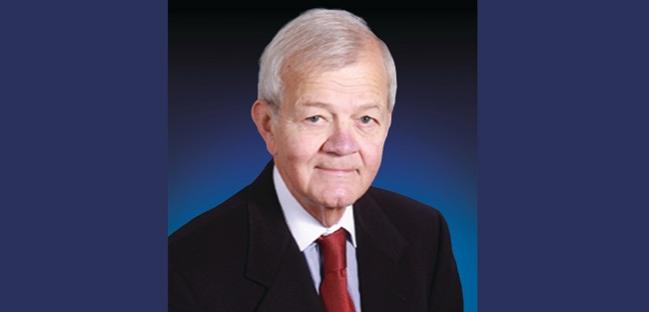Kenneth Kent, Angioplasty Pioneer and Original TCT Co-Director, Dies at 81
The innovator will be remembered by others for his thirst for knowledge and compassionate clinical manner.

(UPDATED) Kenneth “Kenny” Kent, MD, PhD, a balloon angioplasty pioneer and one of the original co-directors of the Transcatheter Cardiovascular Therapeutics (TCT) meeting and, died on May 14, 2020. He was 81 years old.
“Kenny was a really iconic figure—one of the original angioplasty giants who took a fairly primitive technique, tried to understand it from the standpoint of scientific assessment, extended its clinical boundaries, and then, when he had access to newer angioplasty devices, really helped us to evolve the field of transcatheter therapy into a variety of new directions,” Martin Leon, MD (NewYork-Presbyterian/Columbia University Irving Medical Center, New York, NY), who worked with Kent for much of his career, told TCTMD. “He was motivated to participate as an educator, clinical scientist, clinician, and mentor, and in all of those ways I think he's really enriched the careers of countless number of physicians over the course of decades.”
Born in Tifton, GA, in 1938, Kent earned his medical degree from Emory University in 1965 and joined the National Institutes of Health (NIH) in 1969 as a clinical associate where he earned his PhD in physiology. After switching his focus to cardiology, he was named director of the cardiac cath lab at the NIH in 1976. Upon meeting Andreas Gruentzig, MD, Kent became enamored with balloon angioplasty and performed the first procedure in the Washington, DC, area in 1977.
At the NIH, Kent initiated the National Heart, Lung, and Blood Institute PTCA Registry, which enrolled and followed the first 254 angioplasty patients as well as thousands of others for many years.
In 1981, he moved to Georgetown University, where he served as the director of the cath lab. In 1990, he helped form the Washington Cardiology Center at the Washington Hospital Center alongside Leon, Lowell Satler, MD, and Augusto Pichard, MD. He remained at MedStar Washington Hospital Center until his retirement in 2013.
“He was my mentor and colleague while he served as the cardiac cath lab director at the National Heart, Lung, and Blood Institute Cardiology Branch. He stood behind me as we did the first percutaneous coronary intervention at MedStar Washington Hospital Center, in February 1981,” said Stuart Seides, MD (MedStar Heart & Vascular Institute, Washington, DC), in a statement posted on his institution’s Facebook page. “Kenny was a master clinician, a patient teacher, and the consummate gentleman, and he will be missed by all who had the good fortune to know him.”
Leon said Kent was known for his embrace of everything new, from devices to ideas. “The beginning of TCT was really formulated on the back porch of his house in Bethesda over a six-pack of beer discussing how we could create some innovative new educational tools after Andreas Gruentzig died,” Leon recalled. “That became the idea to do a boutique meeting in new angioplasty techniques that evolved into TCT.”
Kent served as the co-director of the meeting alongside Leon for 12 years through 1999.
Hany Ragy, MD (National Heart Institute, Cairo, Egypt), remembered meeting Kent at a TCT meeting and inviting him to be a visiting professor in Egypt. “We were surprised with the ease Dr. Kent accepted our invitation despite his busy schedule,” he told TCTMD in an email, adding that Kent ended up visiting a total of three times. “Kenny Kent’s first of three visits in 1997 was the first time I saw true CTO being patiently and successfully recanalized antegrade with primitive tools compared to what we have now. Kenny was so gentle and sweet to everyone in the staff—he is still fondly remembered by each.”
Throughout his career, Kent was involved in several pivotal trials within interventional cardiology, including BARI and BARI 2D. He also sat on the FDA’s Circulatory System Devices Panel for 7 years and served as a medical officer for the agency following his retirement.
Kent is survived by his wife of 35 years, three sons, two daughters, and three granddaughters.
In the days following the news of Kent’s death, many took to Twitter to share their memories.
We have lost an ICON. Innovator, scientist, skilled IC, and true mensch. The world was a better place for Kenny Kent having been here. https://t.co/gm6Tm1kPx6
— kenneth rosenfield (@krosenfieldMD) May 15, 2020
We lost a legend today. Kenny Kent was a master, mentor and true gentleman. Thoughts and prayers to the Kent family pic.twitter.com/chWt32n4qW
— Regina Deible (@rdeibs) May 14, 2020
Kenny Kent in Cairo 1997 with the entire Cairo Cath staff after the end of 3 grueling complex work days, may he RIP, I told the staff of his passing away, they all prayed for him and his family, fondly remembered in Egypt. https://t.co/Gkoi5KOcoz pic.twitter.com/MoijFYmnR5
— Hany Ragy (@Hragy) May 17, 2020
We lost a hero..,
— Stephen Mitchell (@Sting64r) May 18, 2020
Kenneth Kent, MD,PhD
Pioneer, musician, sailor, Renaissance man, creator of Interventional Coronary databases, BARI and BARI 2, Innovative remote teaching of interventional treatment and Hoya!!@MedStarWHC @MedStarGUH @GUAlumni @GUMedicine pic.twitter.com/pInsbwbat1
Yael L. Maxwell is Senior Medical Journalist for TCTMD and Section Editor of TCTMD's Fellows Forum. She served as the inaugural…
Read Full Bio

Comments